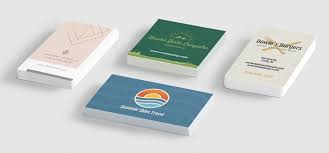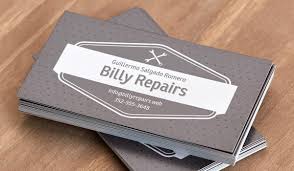
Business cards are an essential marketing tool for any professional. They serve as a tangible representation of your brand or business and leave a lasting impression on potential clients or customers. Designing an impactful business card requires careful consideration of various elements, from the overall concept to the final product. In this blog post, we will guide you through the process of designing business cards, helping you create a professional image that resonates with your target audience.
Table of Contents
Define Your Brand Identity
Before you start designing your business cards, it’s crucial to have a clear understanding of your brand identity. Consider your brand’s values, target audience, and unique selling points. These elements will influence the design choices you make.
Begin by selecting a color palette that aligns with your brand. Colors evoke specific emotions and can communicate a particular message. For example, vibrant and bold colors may convey creativity and energy, while muted and neutral tones may signify elegance and professionalism.

Choose the Right Typography business cards
Typography plays a significant role in designing business cards. The font selection can convey the personality and image of your brand. Choose fonts that are legible and reflect the tone of your business.
Consider the hierarchy of information on your business card. Your name or business name should be the most prominent element, followed by contact details, such as phone number, email address, and website. Use a combination of font sizes and styles to create a visually appealing hierarchy.
Keep it Simple and Clean
When it comes to business card design, less is often more. Avoid cluttering your card with excessive text or graphics. A clean and minimalist design can create a more professional and sophisticated impression.
Utilize white space effectively to enhance the readability and visual appeal of your card. Leave enough space around each element to prevent a crowded or overwhelming look.

Incorporate your Logo
Your logo is a visual representation of your brand identity and should be a prominent feature on your business card. Ensure that your logo is visually appealing and aligns with the overall design and aesthetics.
Place your logo strategically, considering visual balance and legibility. It can be placed on the front of the card, centered or aligned to one side. You can also consider printing your logo on the back of the card for added impact.
Include Relevant Information
When designing your business card, only include essential information that is relevant to your audience. This typically includes your name or business name, job title or area of expertise, phone number, email address, and website.
Including social media handles can be beneficial if they are actively used for professional purposes. However, be selective and focus on platforms that are most relevant to your target audience.
Experiment with Shapes and Materials
Consider exploring different shapes and materials for your business cards to create a unique and memorable impression. While rectangular cards are the most common choice, you can opt for rounded corners or custom die-cut shapes that align with your branding.
Additionally, you can experiment with different materials like premium cardstock, textured finishes, or even eco-friendly options. The choice of material can further reinforce your brand image and add a tactile element to your business cards.

Proofread and Review
Before finalizing your business card design, double-check all the information for accuracy and ensure there are no typographical errors. A simple mistake can create a negative impression or lead to missed opportunities.
Review the overall design, paying attention to alignment, spacing, and visual elements. Get feedback from others to gain different perspectives and make necessary adjustments if needed.
Print with a Professional Service
Once you have finished designing your business cards, it’s essential to choose a professional printing service. High-quality printing will bring out the best in your design and ensure that the final product accurately represents your brand.
Consider working with a printing service that specializes in business cards and offers a variety of finishes, such as matte, gloss, or spot UV. Request a sample print to ensure that the colors and design elements are accurately reproduced.
In conclusion, designing business cards is a process that requires thoughtful consideration and attention to detail. By defining your brand identity, choosing the right typography, keeping the design clean and simple, incorporating your logo effectively, including relevant information, and experimenting with shapes and materials, you can create a professional image that leaves a lasting impression. Remember to proofread, review, and print with a professional service to ensure the final product accurately represents your brand.
Click here for more information about wristbands: https://www.topwristband.com
Reference Website:https://www.natlawreview.com/article/ways-design-lawyer-business-card-stands-out



